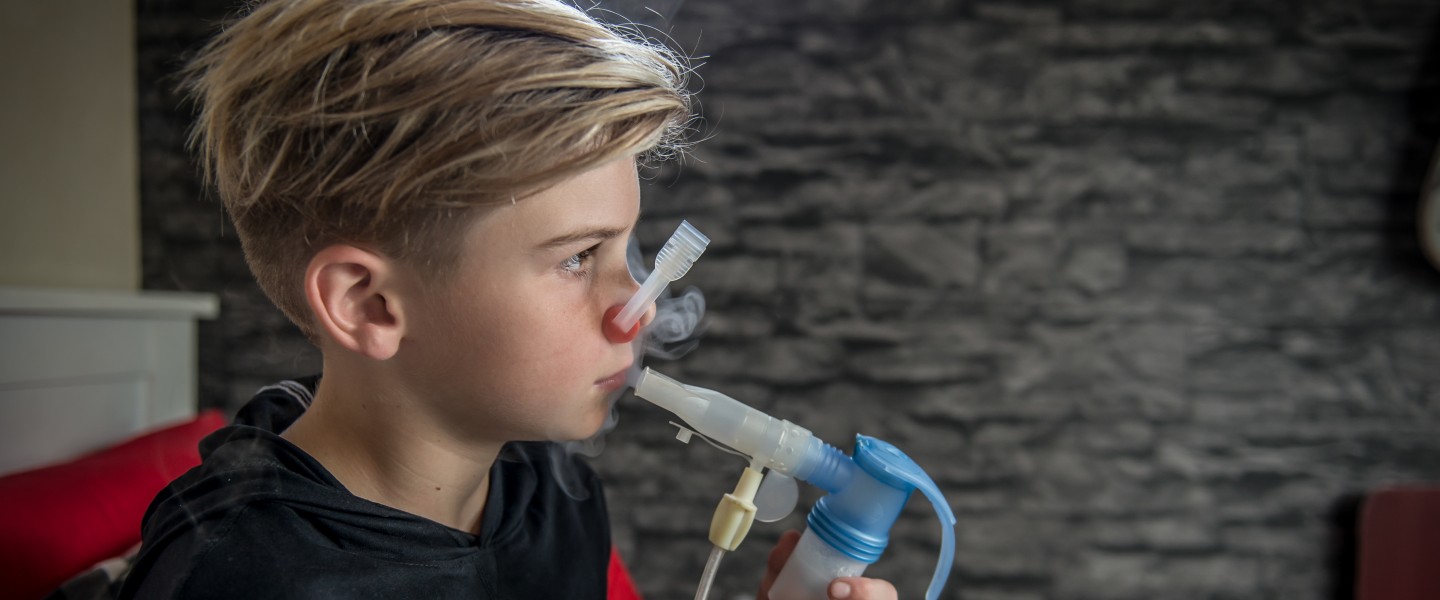
Over the last two decades, there have been many advances in airway clearance techniques or physiotherapy techniques and now there are many options available to people with CF.
Rebecca Scoones, paediatric respiratory physiotherapist discusses high frequency chest wall ossilation (the vest).
Widespread access to the internet and social media pages means the CF community can easily find out what's happening in other places around the world with respect to the treatment and management of CF.
One question often raised both to CFNZ and to physiotherapists is about High Frequency Chest Wall Oscillation (HFCWO) or ‘the vest’ and would this be an option or be beneficial for people with CF in New Zealand.
The vest is a machine attached to a ‘vest jacket’ which delivers vibrations to the chest wall mimicking mini coughs and is meant to shake the mucus out of the airways so it can be coughed up. There are different sized jackets and these need to be changed as your child grows. Vest machines cost between $10,000–$12,000 in New Zealand if purchased new. The vest is commonly used in the USA due to health insurers covering the cost but is less commonly used in Canada, Australia, the UK and Europe.
When investigating different options for airway clearance, it's important to discuss your thoughts with your clinical CF team and to refer to the evidence around each option. Over the last few years, there has been more evidence regarding the vest and it's important to know this information if people with CF and their families are considering the vest as an airway clearance option.
In 2013, a research article was published in the medical journal Thorax by McIllwaine et al, comparing the effectiveness of the vest compared to positive airway pressure (PEP) as airway clearance techniques for CF. This study is a long-term randomised control trial of 107 people in 12 CF centres across Canada and involved adults and children. This was the first large, long-term study conducted on the vest to compare it to another technique.
The study found participants using the vest experienced almost double the number of chest infections requiring antibiotics and less time in between infections. Both of these measures are associated with poorer lung function over time.
People in the vest group were also 3 times more likely to need IV antibiotics (rather than inhaled or orals) to treat the exacerbation. Participants in the study also reported they preferred PEP over the vest due to flexibility and treatment time. The conclusion from the authors was to continue with PEP as the main form of airway clearance in people aged over 6 in Canada.
Another study in Thorax by Osman in 2010 compared the vest to usual airway clearance techniques such as PEP, Flutter, ACBT in the short term. The authors reported participants in the vest group produced less sputum in the physio session and 24 hours after.
Authors have suggested reasons why the vest was found not to be as effective as other techniques. This can be because the vest provides no positive airway pressure which can help to hold floppy airways open. Positive pressure also helps to get air behind trapped sputum and forces it out of the small airways. Another reason suggested is the vest is a passive technique and doesn’t engage your breathing muscles as much as other techniques do and doesn’t create the same muscle workout.
In the research we have available, the vest does compare favourably to percussion and postural drainage and could be an option for people using this as their treatment technique from aged 2. Most children in New Zealand are recommended by their physiotherapist to change from doing percussion to do PEP at around 5–8 years of age.
Physiotherapists in New Zealand are always looking at international best practice and evidence based practice when working with families and people with CF. Using a vest for airway clearance is not widely recommended in New Zealand based on evidence and international recommendations.
If you're thinking of purchasing a vest or starting any new treatment, it's strongly recommended you discuss this with your CF team so they can advise you on the best course of action. If you feel your current physiotherapy regime is not meeting your needs or you want to try something different, then please have a chat to your physiotherapist in clinic. They'll be more than happy to help.